An All-You-Need Guide To Data-Driven Email Marketing
60% of buyers say emails shape their purchase decisions. This means your email campaigns cannot be guesswork.
In this article, we will explore what data-driven email marketing is and why it should matter to you. We will also share the best practices you need to use and the challenges you need to dodge.
By the end, you will know how to better use your customer data to improve engagement, personalize email content, and drive more conversions.
Data-Driven Email Marketing: The Secret Sauce To Smarter Campaigns
Data-driven email marketing is the use of real, quality customer data to create personalized, targeted campaigns. Instead of guessing what your audience wants, you use actual data points to:
- Craft subject lines that match user interests
- Send personalized product recommendations
- Time your email marketing campaigns when engagement is highest
To make this work, you need data from multiple sources. Here’s where to get it and the tools that help:
| Data Source | Where To Get It | Helpful Tools |
| Website Activity | Page views, time on site, form submissions | Google Analytics, Hotjar |
| Purchase History | Orders, frequency, cart value | Shopify, WooCommerce |
| Email Engagement | Opens, clicks, unsubscribes | Mailchimp, Klaviyo, HubSpot |
| Customer Preferences | Surveys, feedback forms | Typeform, Google Forms |
| Social Media Interactions | Likes, shares, comments | Facebook Insights, Sprout Social |
Now, why does data-driven email marketing matter?
Because customers expect relevant content that aligns with their needs at the right stage of their customer journey.
The best part?
This data does not just improve current emails; it also shapes your future emails. Plus, it helps you attract repeat customers because it reveals what works, which helps you send smarter offers and keep your audience coming back for more.
With all the numbers and data, making sense of it all can feel overwhelming. This is where it pays to hire an email marketing specialist with analytics experience. Instead of guessing what works, you can have someone optimize emails to drive higher conversion rates.
How To Win At Data-Driven Email Marketing: 6 Must-Follow Best Practices
Review each best practice and jot down quick changes you can make right now to improve your email marketing efforts.
1. Segment Your Audience To Match Content With Customer Intent
If your emails do not match what your email recipients actually want, you are simply adding noise to their inbox. As an entrepreneur or email marketer, you need to use user behavior to understand:
- Why your customer subscribed
- What your customers are looking for
- How to guide them to the next step
With this, you can make every email feel intentional, which helps you strengthen customer engagement at every touchpoint.
What To Do
Track user behavior to understand what your audience wants. Look at:
- Email engagement (opens, clicks, replies)
- Website activity (product pages viewed, blog posts read)
- Purchase behavior (first-time buyers, repeat customers, abandoned carts)
This lets you spot patterns and intent-based triggers, which are specific actions email recipients take that signal their interest and readiness for a targeted follow-up. For example, if a subscriber clicks on multiple emails about a specific topic but has not made a purchase, they are showing high interest but need more reassurance.
Then, use your data to create audience segments, like:
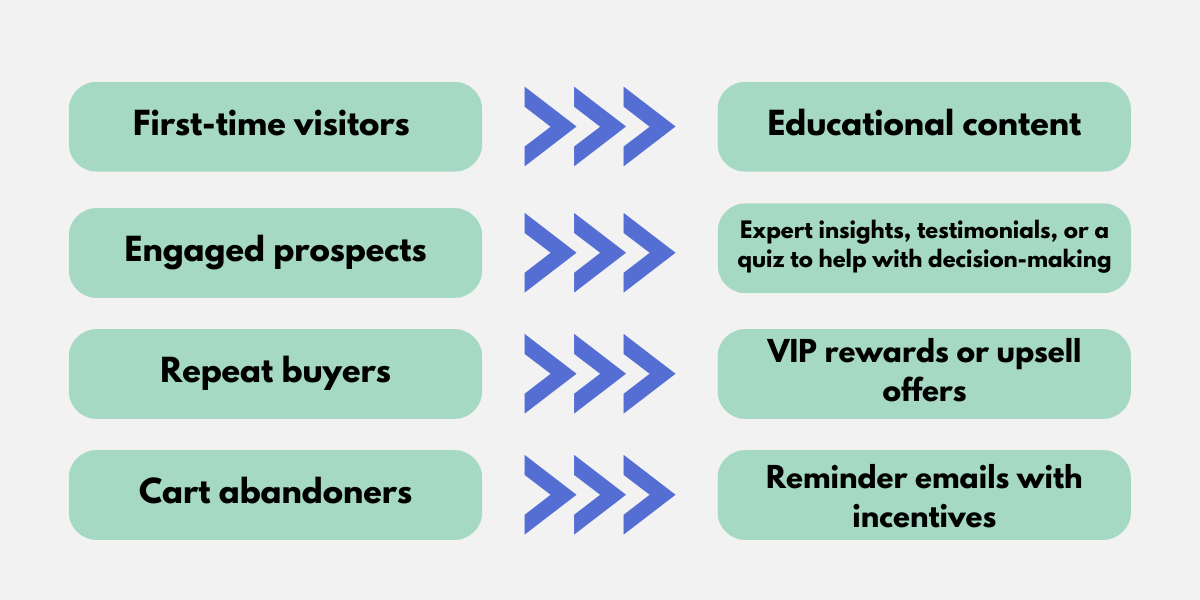
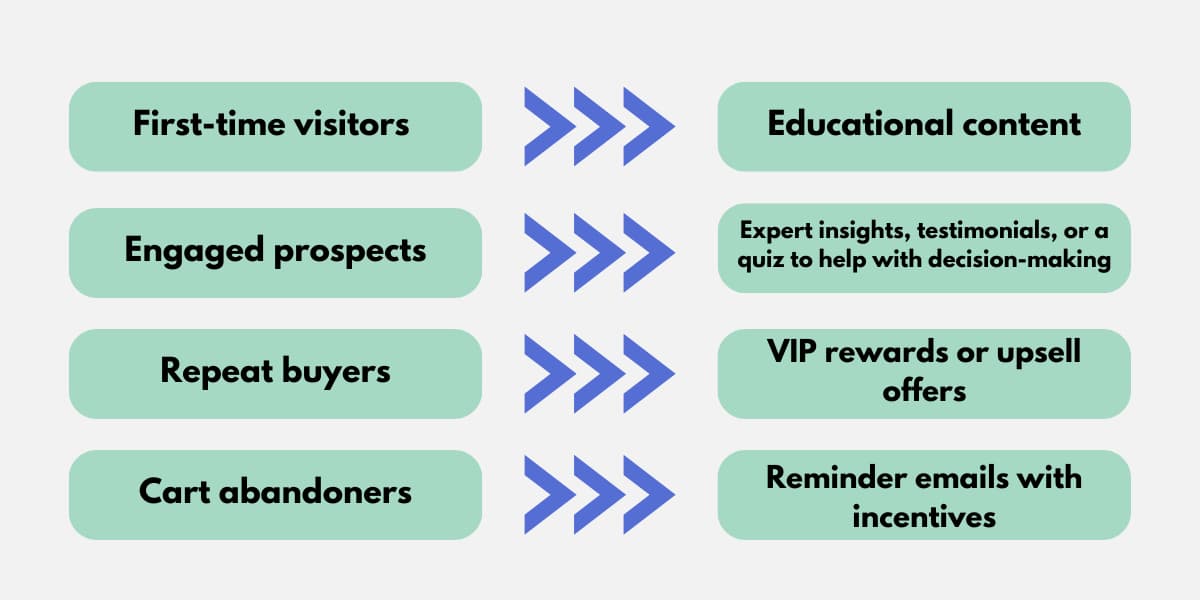
With this, you can prepare the type of content you should send out depending on their intent and actions. Suppose you are in the health niche selling krill oil supplements.
If a first-time visitor reads your blog on krill oil benefits for brain health, add them to an educational content segment. Send an email with a link that explains its advantages over fish oil.
Now, if they later open the email and click the guide link, move them into the engaged prospect segment. Follow up with an email featuring customer testimonials or a short quiz to help them find the best krill oil supplement for their needs. This step-by-step approach builds trust and keeps them engaged without pushing a sale too soon.
2. Clean Your Email List Regularly To Send Emails That Land In Inboxes, Not Junk
Invalid or disengaged contacts will hurt your sender reputation and get your emails to land in spam. Meanwhile, a clean list helps you improve deliverability and guarantees you are reaching real people who will take your desired actions. In fact, keeping your email list clean can increase deliverability rates by as much as 25%.
The more accurate your data, the easier it is to run effective data-driven email marketing campaigns and make better decisions for future ones.
What To Do
Use email marketing tools like Byteplant to validate email addresses automatically. It runs comprehensive scans from DNS validation to SMTP verification, plus real-time live checks to keep your data accurate.
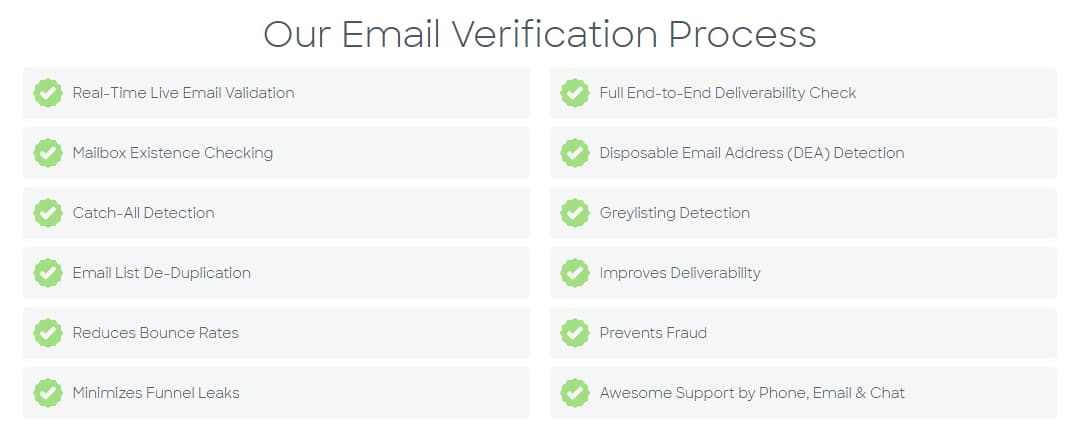
To clean your email list further, remove inactive subscribers. But if someone has not engaged in months, send a re-engagement email before removing them.
You should also filter out role-based roles. Addresses like support@ or sales@ rarely belong to a single person and have lower engagement rates. Make sure to also remove duplicate contacts to avoid distorting your data. Lastly, run consistent list audits to maintain accuracy.
3. Use Storytelling To Make Your Emails Feel Personal & Motivate Action
Data-driven email marketing is more than numbers; it is about knowing your audience well enough to tell stories that move them. When you analyze customer behavior, you see what:
- They care about
- Struggles they face
- Drives their decisions
Instead of sending generic promotions, you can craft personalized messages that make your emails feel like they were written just for them. Storytelling makes data meaningful as it turns insights into narratives that drive user engagement and action.
What To Do
Turn customer data into real-life scenarios. For example, let’s say you are in the outdoor space niche selling these cedar pergola kits. Here’s how it can play out:

This storytelling makes the experience relatable and highlights how the pergola solved a real problem for Mark, turning his backyard into a space he truly enjoys.
Another way to do effective storytelling is to create urgency with your narrative. Instead of saying “limited time offer,” tell a story about why acting now makes a difference.
You should also use visuals, testimonials, or behind-the-scenes content to bring your story to life.
If you are doing bulk personalized emails, you can use AI content generation tools like Jasper to be more efficient. But make sure to humanize your email content with real emotions, relatable language, and authentic experiences. Write them as if you are talking to a friend, not like a sales pitch.
4. Collect Zero-Party Data To Deliver Hyper-Personalized Email Experiences
Instead of relying on third-party tracking or guessing based on email interactions, zero-party data gives you direct insights that customers voluntarily share. This means analyzing data straight from your audience, which makes it more accurate and useful.
Suppose you are in eCommerce and want to increase your eBay sales. Send a post-purchase email survey asking buyers what they are shopping for next. If someone who bought wireless earbuds selects “gaming accessories,” follow up with targeted emails featuring headsets or controllers.
The result? Better customer experience, stronger customer retention, and future campaigns that actually meet your audience’s needs.
What To Do
Here are different ways to collect your zero-party data:
- Use conversational pop-ups to ask simple, engaging questions instead of generic forms.
- Create interactive quizzes to help customers find the right product while collecting insights.
- Offer exclusive content in exchange for insights. You can provide guides, discounts, or VIP access.
- Use preference centers to let subscribers choose content types, frequency, and topics.
- Send surveys after purchases to gather feedback on product experience and interests.
5. Monitor Seasonal Trends To Adjust Email Promotions To Maximize Sales During Peak Periods
If you track user interactions and seasonal buying habits, you will know when demand surges for specific products and can adjust your emails accordingly. Instead of guessing when to push certain offers, you use real data to anticipate customer needs.
So, if your data shows customers start shopping for outdoor furniture in March, do not wait until summer to send promotions. With this, you can make sure you craft successful data-driven email marketing campaigns that align with real-world demand.
What To Do
Use Google Analytics to track website searches. You can see which are the most popular pages visited by your audience. Then, see which seasonal products have the highest spikes.
Simply do this: Reports > Engagement > Pages and screens
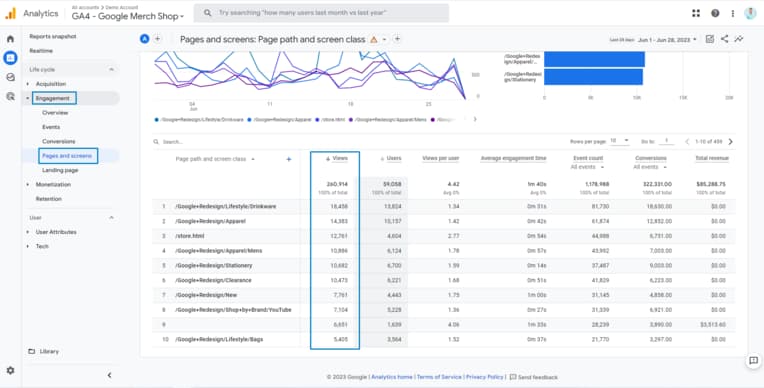
Use social media insights too. For this, use Sprout Social’s Listening features, like this Word Cloud:
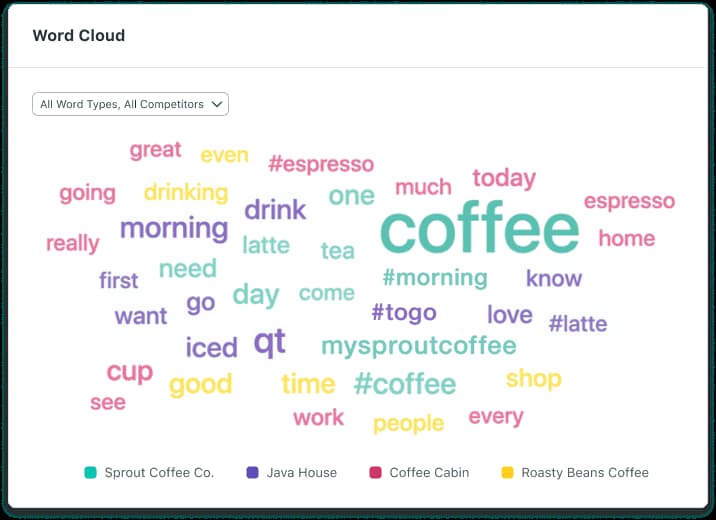
It instantly sorts through billions of data points to uncover trends, insights, and key takeaways that shape your next big email strategy. Plus, you can use it to monitor competitor-related conversions so you can see what is working for them, spot gaps in your own approach, and refine your emails to stay ahead.
In addition, analyze your historical sales data to identify patterns and predict seasonal demand. If your data shows a spike in grill sales every May, start sending emails in April with BBQ bundle deals, recipes, and early-bird discounts so you are ahead of the seasonal rush.
6. Apply A Lead Scoring System To Stop Wasting Time On Cold Prospects
You need to know who to prioritize. Otherwise, you are wasting time on people who are not ready to buy.
This is where a lead scoring system changes all that. Instead of guessing which leads are worth your time, you assign scores based on their actions. Someone who opens multiple emails, clicks on product pages, and downloads a guide is far more valuable than someone who just signed up and never engaged.
With this, you can focus on high-intent prospects, when to follow up, and how to tailor your messaging for higher conversions.
What To Do
Identify key actions and assign points like this:
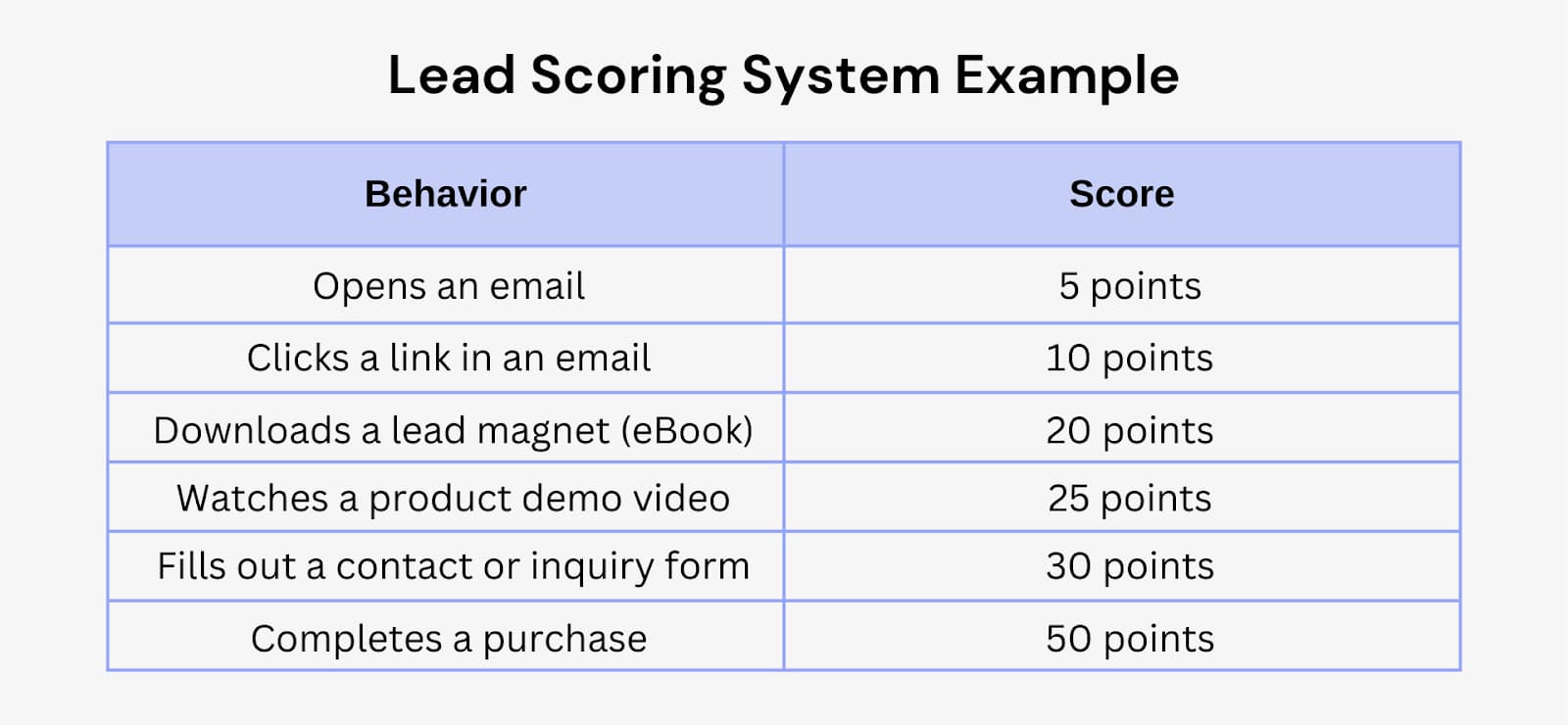
To make this easier, use an email marketing platform like HubSpot’s lead scoring tool.
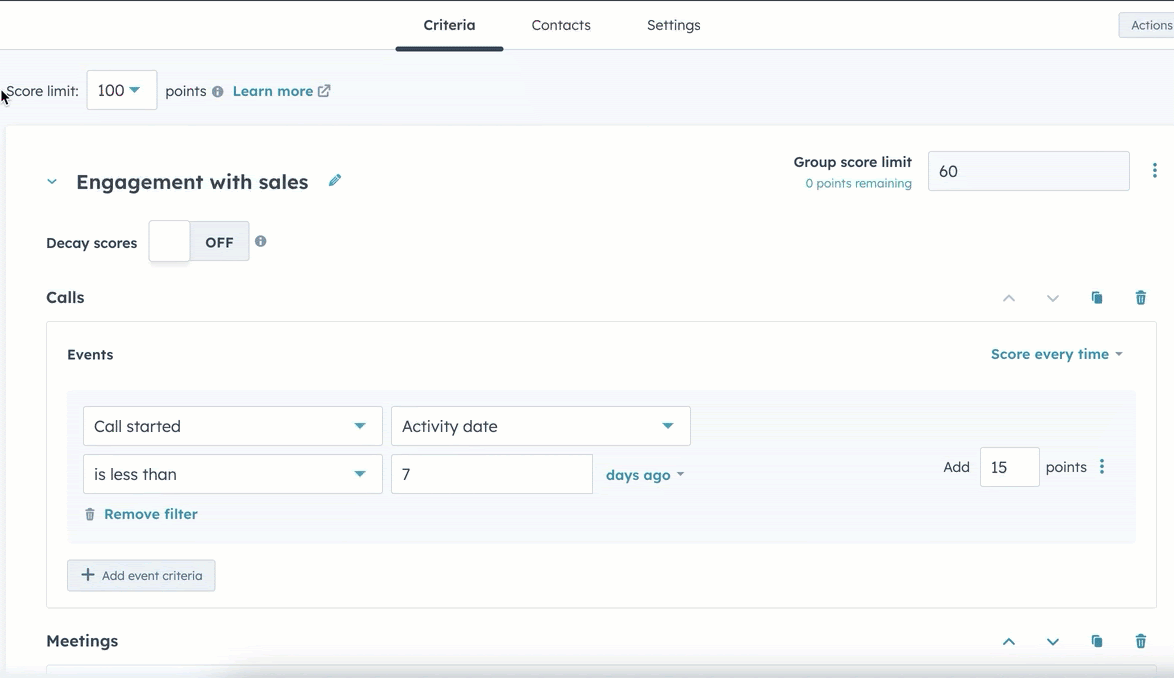
Also, make sure you define thresholds to help you decide when a lead is warm, hot, or needs more nurturing.
For example, if a lead opens 3 emails (15 points), clicks a link in one (10 points), and fills out a contact form (30 points), their total score reaches 55 points. You can mark them as hot, ready for a direct sales follow-up.
Meanwhile, a lead with only 20 points from downloading a lead magnet might be warm and need more nurturing emails before deciding. If their score stays under 15 points from just opening a few emails, they remain cold and require long-term engagement before a direct pitch.
5 Roadblocks To Data-Driven Email Marketing & How to Break Through Them
Spot what is holding your emails back, highlight the fixes, and fine-tune your strategy to reach the right people and make your data-driven email marketing work smarter.
A. Inconsistent Data Collection
One month, you are tracking website visits and purchase behavior; the next, you are only looking at email clicks. Data inconsistency means you cannot spot trends, predict customer behavior, or optimize your emails effectively.
This causes:
- Poor segmentation
- Irrelevant messaging
- Missed sales opportunities
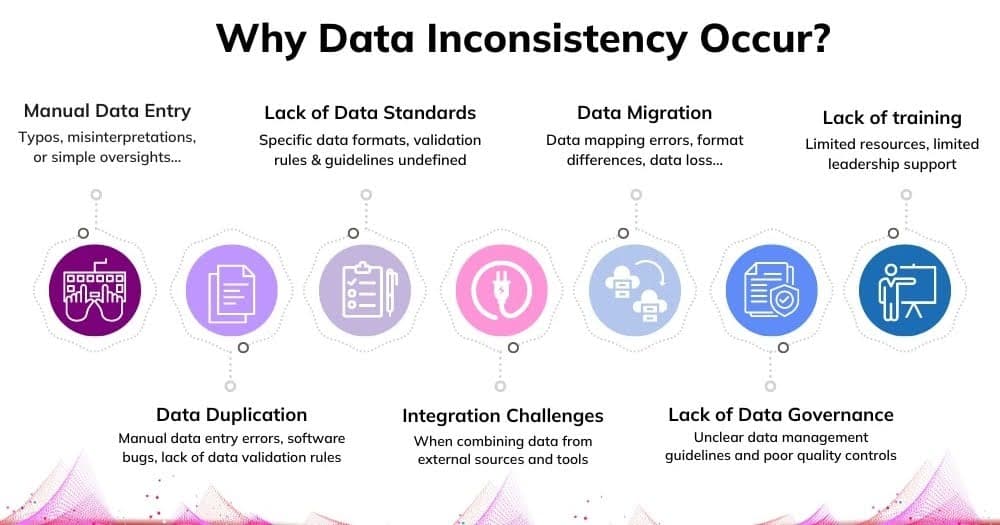
Here’s how to collect data effectively:
- Standardize data entry across your team to make sure everyone logs customer details the same way to prevent inconsistencies.
- Decide which data points matter most, like email opens, purchases, and website activity, and track them consistently.
- Set up email marketing tools that track behavior automatically to collect real-time data.
- Sync your CRM, email, and analytics tools so that data flows seamlessly across your systems.
B. Lack Of Training On Data Analysis
38% of employees struggle to keep up due to insufficient training and email marketing teams are no exception. Your team might have access to powerful email marketing tools, but if they do not know how to analyze the data, it is like having a sports car without knowing how to drive.
Without proper training, they can misinterpret key metrics, focus on vanity numbers, or overlook insights that could increase engagement and conversions. This causes poor segmentation, ineffective personalization, and wasted marketing efforts, all because the data isn’t being used correctly.
Here’s how to improve your team’s effectiveness:
- Leverage free and paid online courses on platforms like Coursera or HubSpot.
- Create internal data playbooks. Document best practices for analyzing key email metrics and segmenting audiences.
- Offer bite-sized, ongoing training. Short, regular training sessions help employees keep up with evolving data trends.
- Provide hands-on training with real campaign data. Use past email results to teach employees how to identify trends and optimize strategies.
- Review campaign performance together. Host team meetings where everyone breaks down what worked, what didn’t, and why.
- Hire team members with data skills from the start. Skills-based hiring guarantees you do not have to train extensively later on.
C. No Defined KPIs For Success
If you do not define what success looks like, how will you know if your emails are working?
Without clear KPIs, you risk focusing on the wrong numbers. Meanwhile, a well-structured KPI framework helps you track key metrics that drive engagement, conversions, and long-term customer value.
What does this mean for you?
You are not just sending emails, you are actually improving your business results.
Here’s how to set your KPIs:
- Compare against previous campaigns to measure improvement, not just industry averages.
- Segment KPIs by campaign type. For example, if you are tracking welcome emails, focus on open rates and first-click engagement, while the key KPI for re-engagement emails should be how many inactive subscribers return and purchase.
- Align KPIs with business goals. If your goal is revenue growth, focus on conversion rates and customer lifetime value, not just open rates.
- Monitor trends over time. Do not judge success on one campaign; look at consistent growth in key areas.
- Continuously review and adjust your KPIs. Your business evolves, and so should the way you track key metrics for success.
D. Sending Emails At The Wrong Time
When you send emails when subscribers are not checking their inboxes, even the best subject lines won’t save you. A study found that sending emails at the worst times led to a 214% surge in unsubscribe rates. Also, poor timing prompts low open rates, weak engagement, and lost conversions because your message gets buried under dozens of other emails.
Here’s a general idea of the best times to send your emails:
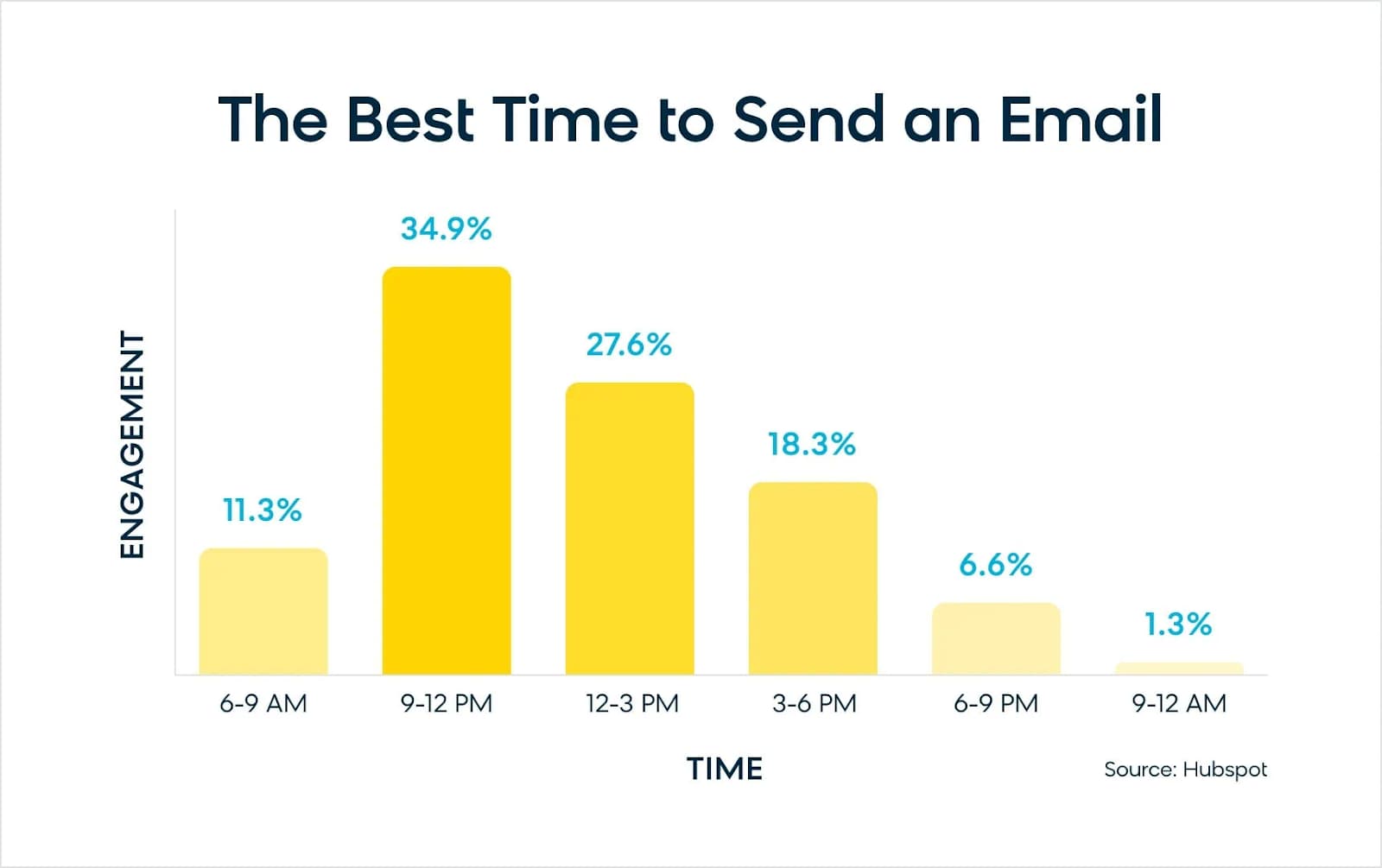
Here’s how to know when to send you emails:
- Use tools like Bloomreach for AI-driven send-time optimization.
- Use behavioral triggers for real-time emails. Send follow-ups, abandoned cart reminders, or welcome emails exactly when customers take action.
- Analyze past engagement trends to see when your subscribers typically open and click emails to identify peak engagement times.
- Monitor industry benchmarks, but prioritize your data since your audience’s behavior matters more.
- Test different send times with A/B testing. Send emails in the morning, afternoon, and evening, then analyze open and click rates to determine when your audience is most responsive.
E. High Cost Of Advanced Email Marketing Tools
Powerful email marketing tools promise AI-driven personalization, automation, and deep analytics—but they come at a price. Plus, if you overspend on features you do not fully use, your budget disappears fast.
On the flip side, cutting costs by choosing a basic platform can limit segmentation, automation, and data-driven decision-making. All of which can make your data-driven email marketing less effective.
Here’s how you can pick the right ones without unnecessary expenses:
- Compare costs across multiple providers. Some tools offer similar features at drastically different prices. Do your research.
- Define must-have features before subscribing. For example, list essentials like automation, segmentation, and reporting so you do not pay for tools you do not need.
- Cut costs with open-source or free alternatives. Some platforms, like Mailchimp’s free plan, work well for smaller businesses.
- Look for scalable pricing plans that grow with your business instead of locking you into an expensive plan upfront.
- Use free trials before committing. Test platforms like HubSpot or ActiveCampaign to make sure they fit your needs.
Conclusion
What’s next? Look at your data-driven email marketing strategy and identify what needs the most attention. For example, if your emails are not getting engagement, refine your audience segmentation efforts.
To arrive at the best decision, talk to your team members and discuss what practices will make the biggest impact. But make sure you track your results so you can adjust tactics as needed.
You should also use tools like Byteplant to make it easier to send emails that do not bounce. Get in touch now, and let’s start cleaning your email list.
 Burkhard Berger is the founder of Novum™. He helps innovative B2B companies implement modern SEO strategies to scale their organic traffic to 1,000,000+ visitors per month. Curious about what your true traffic potential is?
Burkhard Berger is the founder of Novum™. He helps innovative B2B companies implement modern SEO strategies to scale their organic traffic to 1,000,000+ visitors per month. Curious about what your true traffic potential is?
















